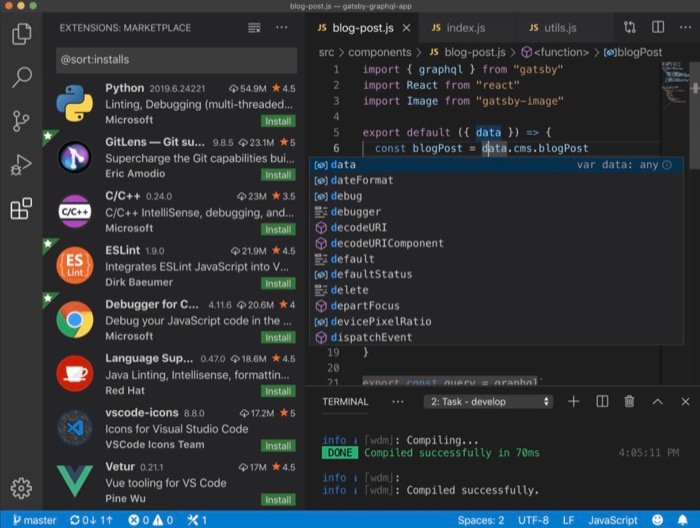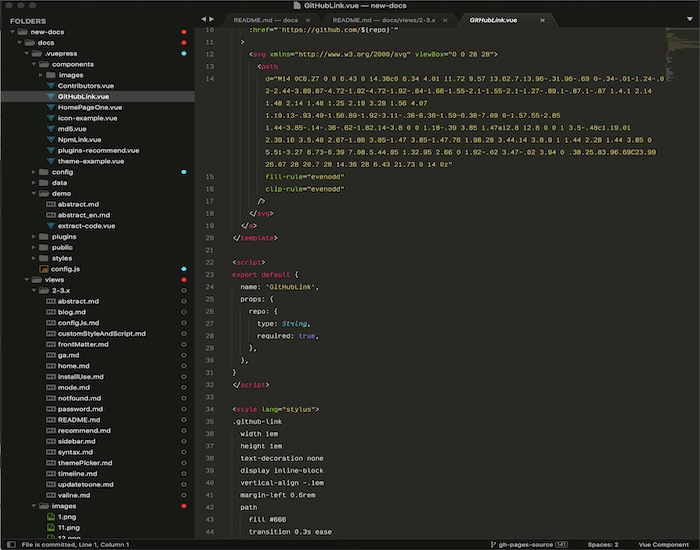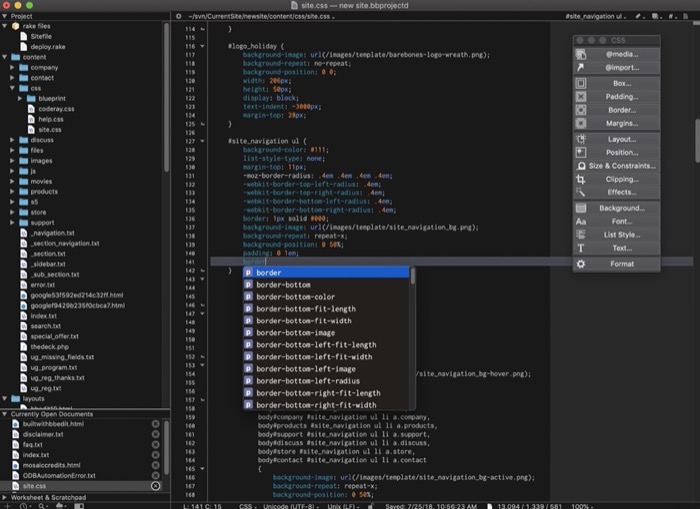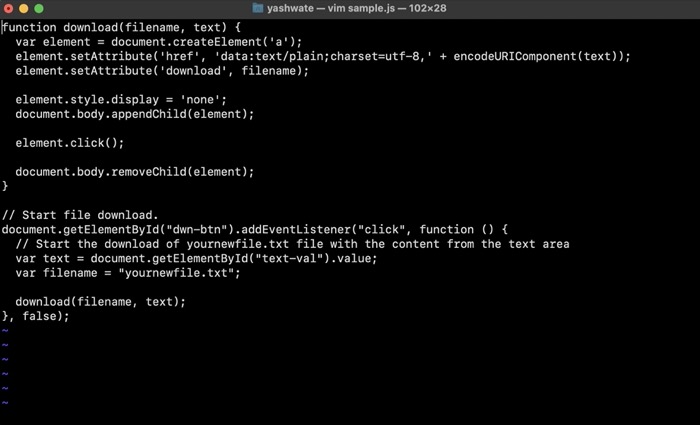Best Text Editors for Mac in 2022

Apple’s Macs come with TextEdit as the standard text editor. Both macOS and it are open-source and pre-installed. It enables you to create and modify documents. When compared to other text editors out there, it has fewer features, though. As a result, neither writing code nor managing application projects with it is the ideal course of action.
Therefore, you should search for some of the available third-party text editors if you want a more complete experience from a text editor. Here are our top selections for the finest Mac text editors to aid you in this process.
Best Mac Text Editors you should use
Although there are many different types of text editors, they can be broadly divided into source-code editors and basic text editors (plain text or rich text). The functionality and purpose that each type serves largely distinguishes it from the other.
Source-code editors offer extra capabilities to facilitate writing code faster than text editors, which only focus on making the process of creating and editing documents easier. For instance, a source-code editor provides you with capabilities like syntax highlighting, autocomplete, indentation, and bracket matching that are not available in a simple text editor.
As a result, it is advisable to use a source-code editor for writing and modifying general documents rather than a simple editor for writing code. Even while you can accomplish it, a basic text editor may not provide as nice of an experience as a source-code editor or an IDE due to its lack of development-specific capabilities (integrated development environment).
Here are the top text editors for Mac, with that out of the way.
1. Visual Studio Code
Microsoft’s Visual Studio Code, also known as VS Code, is a freeware source-code editor. It is based on the Electron framework and works with Linux, macOS, and Windows as well as other popular operating systems.
the text editor VS Code
One feature of VS Code that sets it apart from other source-code editors is that it works with many directories and isolates them into different workspaces rather than using a project-based structure, acting somewhat like a language-agnostic code editor.
In terms of capability, VS Code enables you to create programs in a number of languages, including C/C++, Java, Python, JavaScript, and Go. It offers a broad range of tools to aid you in the coding process, including support for syntax highlighting, snippets, code refactoring, debugging, intelligent code completion (or autocomplete), and Git integration. You also have the option of collaborating and doing remote work in real time with your peers.
If you’re just getting started, features like IntelliSense and Peek Definition in Visual Studio Code will aid in your comprehension of the various facets of programming languages.
2. Atom
Source code editor Atom was created by GitHub, which is currently owned by Microsoft. As a result, many of the features you get from it are created and maintained by the community. Atom is based on the Electron framework, just like VS Code, although it doesn’t have as many features out of the box like VS Code does. However, with the help of plugin support, you can modify a number of Atom’s components and add features selectively to meet your needs and project workflow.

In addition to customization, Atom provides the standard set of capabilities, including syntax highlighting, intelligent autocomplete, and a file system browser. It also includes a built-in package manager to make it easy for you to find and install new packages on your machine, as well as Git integration to store and manage your projects directly from the editor.
In terms of programming languages that are supported by Atom, you may use it to write code in C/C++/C#, Java, JavaScript, Python, Ruby, Scala, and many other languages. Teletype, which leverages WebRTC to encrypt all communication between collaborators to provide a safe working platform, now makes it easy to collaborate and work with coworkers in Atom.
3. Sublime Text
Since Sublime Text is a shareware source code editor, most of its capabilities are available for free, but others are only available in the premium version, which you can upgrade to or buy if you require the extra functionality. It is one of the most popular text editors on the Mac and was created with Python and web programming in mind. However, it can also be used with other markup and programming languages.
Similar to Atom, Sublime Text allows you to add plugins to your editor to improve its capabilities and add any missing features. Command palette, snippets, code auto-completion, goto definition, and split editing are a few of Sublime Text’s useful features. A built-in package management is also available in Sublime Text to make it simple to search and install third-party programs on the editor.
In addition to Sublime Text, SublimeHQ now offers Sublime Merge, a GUI-based version control (Git and merging tool) for Sublime Text that facilitates faster repository search, commit modifications, and conflict resolution.
4. BBEdit
Bare Bones Software’s BBEdit is a text editor available only for Macs. It is essentially a free version of the well-known TextWrangler text editor, which is only available on macOS and was discontinued a few years ago.
However, unlike TextWrangler, BBEdit’s free tier has sufficient features and programming functionalities to distinguish it from the plethora of other text editors available. It functions as a straightforward text editor that you can use to interact with plain text files, write code, and make custom scripts. AppleScript, Python, Perl, RegEx, and Shell script are among the languages that BBEdit supports.
As for features, BBEdit offers, to name a few, rapid search and replace functionality, syntax colouring, code folding, and auto code completion. You also get integration of code management systems, support for FTP and SFTP for file transfers, and more.
On the Mac App Store, you may find BBEdit.
5. Vim
A Vi clone with a number of enhancements is called Vim. The majority of conventional Unix-compliant operating systems, including macOS, pre-install Vi, a POSIX standard editor. When compared to the other text editors on this list, Vim looks and feels entirely different.
Vim focuses on getting the fundamentals right while most contemporary text editors emphasise providing a nice-looking interface packed with numerous features and functionalities. And it excels at doing that. However, you do have comprehensive plugin support, and new plugins are constantly being created, allowing you to tailor the editor to your coding preferences and workflow.
Vim doesn’t have a graphical user interface, thus all of your interactions take place in a terminal window or on the command line. Additionally, Vim has a variety of modes that may take some getting accustomed to before you feel comfortable using it because it is a modal editor. Having said that, you can effectively use Vim for a lot more things once you learn how to use it. And you wouldn’t probably go back to using a standard text editor.
6. Emacs
Another well-liked text editor for the Mac is Emacs or Editor MACroS. It is frequently chosen by programmers. It shares a rivalry with Vim, and supporters of both text editors aren’t afraid to brag about how much better their preferred editors are.
Emacs has customization options, much like Vim, but they are more complex in Emacs than they are in Vim. It features more than 10,000 commands, and the user interface enables you to mix these commands and use them to build macros that automate workflow operations.
Like Vim, Emacs requires some getting used to in terms of usefulness. However, the features it comes with make it a very promising text editor for people who seek a setting where they can perform or control essentially every step of their programming workflow. To list just a few features, Emacs offers text editing, project management, an integrated mail and news reader, package support, and an integrated IRC client.
Text Editors to Improve Text and Code Writing/Editing
You can compose and edit documents on your Mac with more text control by using the text editors mentioned above. You can get the most out of them by utilising their development-specific features if you want to use them to create code, which is probably the case as you read this.
Mac text editor: FAQs
Why is a Mac text editor good?
One of the hotly debated topics on the internet is text editors. As we previously said, Vim and Emacs users frequently engage in debates about which of the two editors is superior. In actuality, however, the decision boils down to which text editor you feel most comfortable using and which one best suits your workflow.
To offer you an answer, however, key text editor necessities like user experience, ease of use, functionality, and customizability options—not to mention a low entry barrier, which itself decides whether you would choose an editor in the first place—are what actually classify a text editor as “excellent.”
Which text editor is included with Mac?
The default text editor for Macs is TextEdit, which is pre-installed with macOS. It may be found in the Applications folder, and it lets you write in plain text or RTF (rich text format) (txt).
3. Which free Mac text editor is recommended?
The majority of the text editors on this list are no cost and offer a variety of functions. Our opinion is that your preference—what you specifically want in a text editor, how you intend to use it, and most crucially, your workflow—will have a significant impact on the text editor you choose among these. Having said that, if you’re looking for a more broad response, we suggest using Visual Studio Code, which will give you pretty much all the necessary functionalities for your workflow without making any sacrifices. Vim is the way to go, though, if you only need a simple text editor and are at ease with a terminal interface. Even though Vim could be challenging at first, if you get the hang of it, you can work more rapidly and effectively with it than most text editors available.
4. Is Notepad ++ compatible with Macs?
Notepad++ cannot be used on a Mac as it is only officially supported by Windows. However, if you are used to Notepad++ and you recently made the jump from Windows to Mac, we suggest taking a look at BBEdit 13 and SublimeText, both of which are simple to use and have nearly all the capabilities you could possibly need.
Which text editor is compatible with the Apple M1?
Since Apple’s M1 Macs were first introduced, time has passed. As a result, the majority of applications—including text editors—now provide compatibility for the M1 chip. Therefore, any editor on this list will function flawlessly on an M1 Mac.









